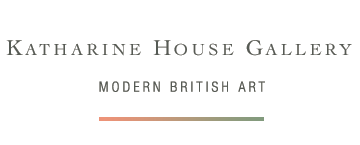Georges Rouault (1871 - 1958)
Please contact the Gallery to enquire about the availability of this artist's work
Biography
Georges Rouault was born on May 27, 1871, in Paris. Between 1885 and 1890 Rouault worked as an apprentice to stained-glass painters on the restoration of medieval windows and attended evening classes at the École des Arts Décoratifs. His predilection for luminous colours and black outlines had its origin in these early experiences. In 1890 Rouault entered the École des Beaux-Arts, and the following year Gustave Moreau became his teacher.In 1904 Rouault met the Catholic writer Léon Bloy and, influenced by him, sought to depict the tragedy of the human condition. At that year's Salon d'Automne a large number of Rouault's watercolours appeared, depicting prostitutes, clowns, and acrobats painted in gloomy colours. His well-known attraction to clowns was fired by his intrigue of the contrast between the clown's "scintillating" costume and ostensibly happy demeanour, and his private life "of infinite sadness" which he saw reflected in all people: "I saw quite clearly that the 'clown' was me, was us, nearly all of us [...] We are all more or less clowns" he concluded.
In 1917 Ambroise Vollard,(1865-1939) became Rouault's dealer and set him up in a large studio in Paris. Vollard was especially interested in the production of books intended to be works of art in their own right, commissioning members of the School of Paris among them Braque, Matisse, Bonnard, and Picasso. From 1917 Rouault produced a series of nearly 60 huge etchings for Vollard, ‘Miserere et Guerre,’ followed by smaller etchings and wood-engravings illustrating Vollard's text ‘Réincarnations du Père Ubu.’ The tales of Father Ubu, the "grotesque of the human species" represent the absurdity of existence. Colossal in his stupidity and cowardice, naive, mean and power-hungry, Ubu was the laughing-stock for generations of French schoolchildren before Alfred Jarry made him the leitmotif of his illustrious series of texts. For these books Rouault developed a new and complex technique in his graphic work demonstrating his mastery of etching, wood engraving, and colour lithography.
During and after World War II, he painted an impressive collection of clowns, most of them self-portraits. He also executed some still lifes with flowers; these are exceptional, for three-quarters of his lifetime output is devoted to the human figure. In 1947 he sued the heirs of Vollard to recover a large number of works left in their possession after the death of the art dealer in 1939. Winning the case, he established the right of an artist to things never offered for sale, and afterward he publicly burned 315 canvases that he felt were not representative of his best work.


